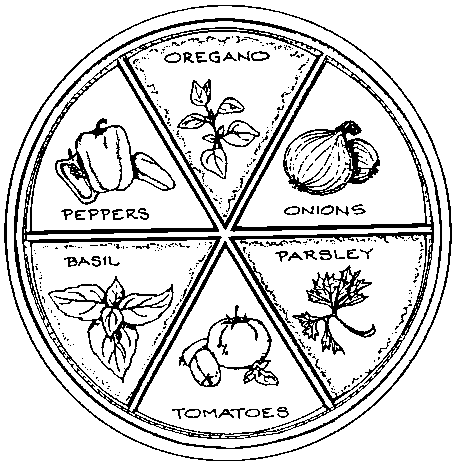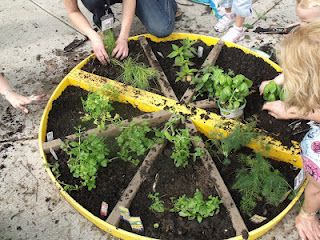One of the most popular foods on the planet is pizza. An article from Bake Magazine revealed that 98 percent of Americans eat pizza. What’s more, 54 percent said that they love pizza.
Ordering pizza regularly at your favorite restaurant or pizzeria, however, can get expensive. If you want to save money but still want to enjoy this mealtime staple and Italian masterpiece, consider growing a pizza garden in your home. The stuff that you grow in your backyard will serve as the fresh and delicious toppings for your pizza.
What is a Pizza Garden?

A pizza garden is composed of fruits, vegetables and herbs to make a tasty homemade pizza. The garden can be in any shape. If you want planting to be a little fun, you could make the garden in the shape of a pie. Then, add triangular “slices” to designate the location of the different herbs, veggies and fruits you’ll be planting.
Why You Should Grow a Pizza Garden
Gardening is a fantastic way to relieve stress. This is helpful especially during the ongoing global pandemic wherein households have to stay home and avoid non-essential travel.
If you’ve got nothing better to do at home and feel stressed with what’s happening around the world, you might as well pick up pizza gardening as a hobby. An article from Psychreg talked about the importance and benefits of home gardening. The article mentioned that this activity helps minimize stress and anxiety, improves a person’s mood, promotes healthy eating habits and saves you money.
What to Grow in a Pizza Garden

The answer will ultimately depend on how you want your homemade pizza to look like. If you’re a meat lover, then a few herbs and veggies will do. If you’re trying to stay healthy and fit, you could grow produce for your next vegetarian pizza.
Not sure exactly what to plant in your pizza garden? Keep these suggestions in mind:
Giant Bell Pepper
If you’re trying to get kids to eat veggies, you’ll want to make your vegetarian pizza look visually pleasing. After all, people eat with their eyes first.
This is where the giant bell peppers come in. They’re available in a range of colors, including red, orange, yellow, green and purple. Plant multiple varieties in your pizza garden to help you create a colorful and cherry pizza. Apart from making a pizza look pretty, these flavorful vegetables deliver high nutritional value to your homemade meals.
Cherry Tomatoes
If you want to enjoy delicious marinara sauce, you’ll have to plant cherry tomatoes in your pizza garden. Use different varieties of tomatoes to create a complex and rich flavor profile in your sauces.
Other than sauces, you could use cherry tomatoes as a topping for your pizza. A cherry tomato variety you can consider planting in your pizza garden is Husky Cherry Red. This variety doesn’t take up a lot of space, allowing you to grow other produce in your backyard.
Basil
This herb pairs well with cherry tomatoes, so be sure to include basil in your pizza garden. When this plant is ready for harvest, simply pick a few leaves, chop them up finely and add them to your tomato sauce. You could also sprinkle basil on top of your pizza as a finishing touch to the dish.
Jalapeno Pepper
These red and green peppers will surely spice up your homemade pizza. When you want your dish to be mildly spicy, harvest jalapeno peppers while they’re still green. On the other hand, you could pick red peppers if you prefer a spicy and slightly sweet pizza. You could also harvest both, as you can’t go wrong with these two varieties.
Rosemary
This herb will give your homemade pizza a wonderful aroma and flavor. Pick a few leaves, chop them up and add them to your tomato sauce mix. Just like basil, you could sprinkle rosemary on top of your pizza.
Oregano
Planting this herb in your pizza garden will allow you to introduce a rich Italian flavor to your dishes. On top of being easy to grow, the flowers of oregano will produce a carpet of color in your backyard. Once you’ve harvested this herb, use it as an ingredient to your tomato sauce or as a finishing touch to your pizza.
Onion
This must-have veggie ingredient adds a zesty flavor to your home-cooked pizzas. When planting onions, remember to choose the variety suited to the climate in your area. Long-day onion varieties thrive in the northern states. The reason is that the summer days in these locations are long. If you live in a southern state, consider growing short-day onions.
Thyme
This herb will make your tomato sauce taste rich. It will also bring a wonderful aroma to your homemade pizza. You can plant thyme in a dry corner of your pizza garden and let it grow on its own.
Pineapple
Many say that pineapple doesn’t belong on a pizza, as they think of it as a bizarre food combination. If you’re a fan of the infamous Hawaiian pizza, however, you’ve got to include this fruit in your garden.
Growing pineapples is easy. You can plant this fruit in your pizza garden or in a pot, allowing you to grow pineapples indoors. When you get the basics right, you can use this fruit as a topping for your next pizza.
How to Build a Pizza Garden
Building a pizza garden does more than just allow you to grow your preferred pizza toppings in your backyard. It’s also an excellent way to get your kids outdoors and teach them the value of planting.
Here’s the summary of the steps when creating a pie-shaped garden in your yard:
- Decide on the site and size of your garden bed. Ideally, go for a location that offers full sun.
- Choose the number of plants you want to grow. Take note that plants have a spacing requirement. Bell peppers, for instance, need 12 to 15 inches of space per plant. Onions need to be four to five inches apart.
- Outline a pie-shaped bed that gives each ingredient sufficient room to grow properly.
- Prepare the soil by getting rid of the weeds and adding organic matter, such as finished compost.
- Install edging on your pizza garden. You could install a plastic or flexible metal edging for the outer edge of your garden. Then, define the “slices” by adding wood pieces.
- Start putting your chosen fruits, vegetables and herbs in your pizza garden. Remember to water them regularly.
From Garden to Kitchen: Tips When Baking Pizza at Home

Once you’ve harvested your desired toppings from your pizza garden, the next step is to whip up a delicious homemade pizza for you and your family. Here are a few baking tips to make restaurant-quality pizza using the ingredients and appliances in your kitchen:
Use a Pizza Stone
This is an absolute must when baking homemade pizza. The pizza stone draws out water from the wet portions of your dough and cooks your pizza more evenly. When you heat up the stone, you give the dough a powerful burst of initial heat. This allows you to enjoy a puffy crust.
Ditch the Rolling Pin
Unless you want a super-thin and cracker-like crust, don’t use a rolling pin when making your dough from scratch. This kitchen tool forces the gas out of your dough and prevents you from getting an airy and light crumb. Instead of a rolling pin, use your hands to gently stretch out the dough.
Avoid Overloading Your Pizza with Toppings
The mantra “less is more” applies to homemade pizzas. After you’ve placed the sauce and the cheese, add just two to three toppings to your dish. Going overboard with your topping selection will weigh down your crust and prevent it from cooking properly.
Cook Your Toppings
Unless you’re making a vegetarian pizza, you should cook every topping before it touches the dough. Your oven may not be hot enough to cook your protein properly. Serving raw meat is the last thing you want to happen. So make sure to cook all meats ahead of time.
You don’t need to order pizza (and tip the delivery guy) if you can make this dish at the comfort of your home. Get started on making a pizza garden, and then impress your friends and family by whipping up a delicious homemade pizza fresh from your kitchen oven.

